Central Idea Graphs and Web Diagrams
Introduction
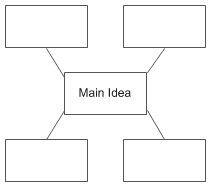
Central idea graphs show a main idea box in the middle, with lines radiating out, connected to additional boxes containing related ideas (see Figure 1). Hence, all the ideas in the outer boxes relate in some way to the central idea in the middle. Note that the number of extensions or boxes can and should vary according to the needs of the information being conveyed.
Best Uses
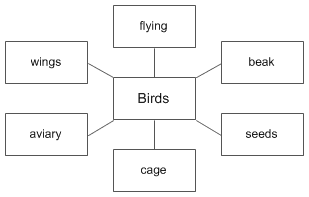
Brainstorming
One great use for CIGs is brainstorming. Start with your main topic in the center and create an extension for each related idea as you think of it. For example, if the central idea is birds, some related ideas might be wings, flying, beak, seeds, aviary, Audubon Society, pets, cage, etc. (see Figure 2).
Big Picture or Summary
CIGs are also very useful for capturing "big picture" information, e.g., an overview or summary of the main topics covered in a lecture, article, or book. In this case, the central idea is the title of the lecture, article, or book, while each extension refers to a pertinent topic.
Cause and Effect
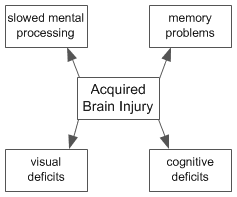
If you use arrows instead of plain lines to connect the boxes to the central idea, they help show the directionality of the information. In other words, CIGs with arrows can indicate cause and effect.
When the arrows point outward from the center, it implies that the main idea causes, leads to, or results in the items in the outer boxes.
For example, let's say the central idea is acquired brain injury (see Figure 3). Some results or effects that brain injury can cause include slowed mental processing, memory problems, visual deficits, cognitive deficits, difficulties managing emotions, etc.
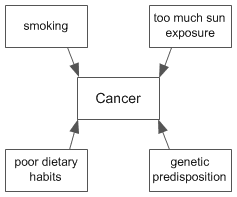
When the arrows point inward, it implies that the items in the outer boxes cause, lead to, or result in the central idea in the middle.
For example, if the central idea is cancer, some contributing factors that can lead to cancer include smoking, prolonged sun exposure, poor dietary habits, genetic predisposition, etc. (see Figure 4).
Web Diagrams
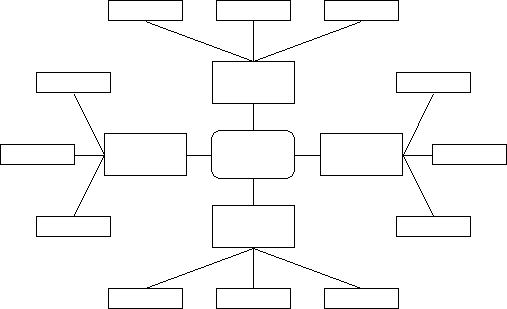
Think of a web diagram as a central idea graph "gone crazy." Web diagrams are great for brainstorming several levels of ideas, all sprouting off one central idea. The "sprouts" have sprouts of their own. The number of arms (or boxes or sprouts) may vary, but Figure 5 shows a web diagram's basic shape.